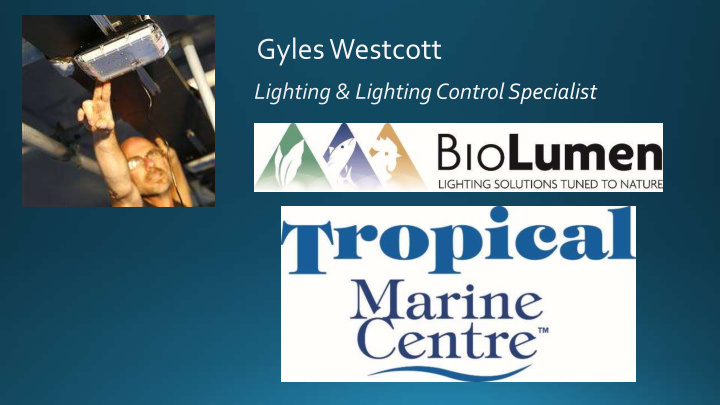



“…using the dynamic interplay between light and water as a route to energy reduction, improved welfare and a new display aesthetic…” or, to put it another way, the use of LED lighting to make… Our ANIMALS happy – IMPROVED WELFARE Our OWNERS happy – LOWER COSTS Our VISITORS happy – BETTER DISPLAYS
Every aquatic habitat is exposed to light of different and variable brightness, from the exposed tropical reef, to the heavily-shaded jungle stream… Every location on the planet has constantly changing day- length… days and nights lengthen or shorten under the influence of the sun, moon and other celestial forces… Water, by it’s nature, dramatically changes the character and power of the light that tries to pass through it….
How is light influenced by water? …while the wavelengths of the different elements of the spectrum further influences the degree to which that part of the spectrum either penetrates the water surface, is reflected off it, or is filtered out as it passed thought the water column… This results in varying amounts The angle of the sun above the of light being either reflected horizon, & waves on the water surface, off the surface, or refracted mean that the “ angle of incidence ” – through the surface… the angle at which the suns rays strike the water surface, is constantly changing…
Table 1. Sunlight's spectral composition in per cent per bandwidth. = 43.25% Color % Violet 4.98 Blue 13.85 Green-Blue 4.49 Blue-Green 9.95 Green 9.98 Yellow-Green 19.25 Yellow 4.13 Orange 7.66 Red 25.71
SPECTRAL COMPOSITION OF LIGHT IN CLEAR SEAWATER AT 10 FOOT DEPTH = 70% +
BLUE-SHIFTED
BLUE LED…
• • Control output from 0 to 100% Pre-set Sunrise/sunset • Or…. Reduce stress • • Optimise visual acuity Reference astral logarithm to • accurately track photic profile of Improved efficiency any Latitude/Longitude (including Photoperiod seasonal shift in midday intensity) • = Phased transition = NO “LIGHT • Optimised to match photic SHOCK” conditions of target species • = fully entrained photo- natural habitat… metabolism (hormone production, • Optimised to match the optic “BIOLOGICALLY etc) physiology of the target species OPTIMISED = correct “ biolumens ”… • Desired elements can be LIGHTING” accentuated to promote/inhibit specific metabolic processes Intensity Spectrum
The relationship between light and water is one of the most dynamic and complex interactions in all of nature. The shimmering, shifting, rapidly-changing patterns we see as shafts of light penetrate the deep, or create kaleidoscopes of colour and shifting shapes on the reef or sandy sea bed are the visual cues of this relationship…. The surface of any body of water is the boundary line – it flexes and bulges and folds, dramatically changing the nature and structure of light from the sun and moon and stars…. Today, we know more about the nature of light and the vital role is has to play in the lives and life-cycles of all animals and plants. At the same time, new technologies mean we can be ever more efficient in the way we use light in the aquatic environment. However, it is not only about lower-energy and attractive displays! There is a new frontier, where biology and technology meet, and understanding this is the key to resolving the conflicting priorities of commerce (lower cost, greater efficiency) and environment (improved sustainability and welfare) that are challenging aquarium curators around the world.
Recommend
More recommend